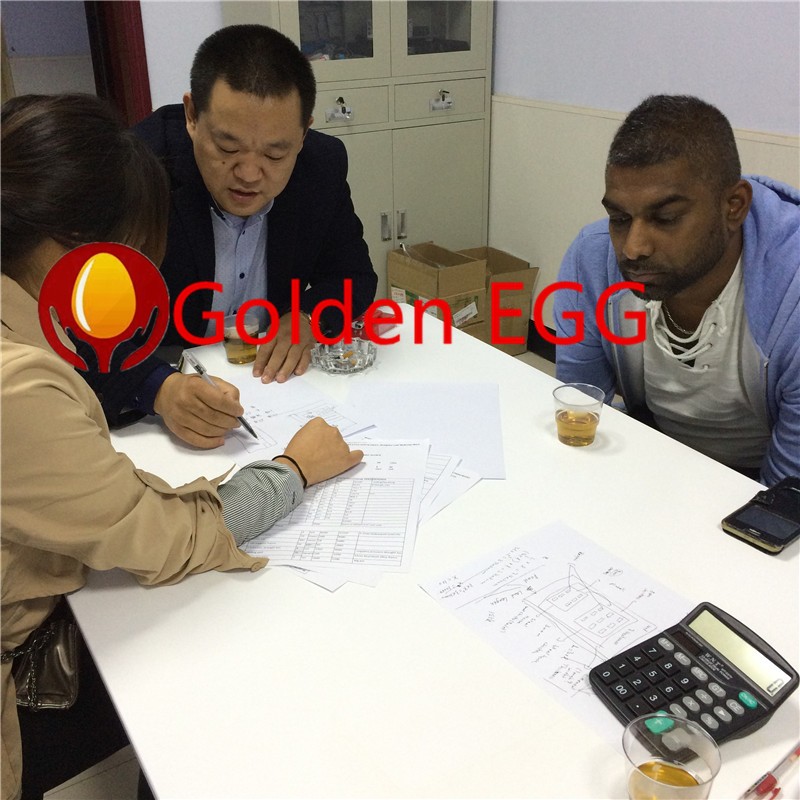Chicken Equipment - Control of Chicken House Temperature
For the production process of broilers and layers, the temperature control of the house is the most critical. In the hot summer weather in summer each year, when the temperature is above 27 °C, the chickens will have an unfavorable stress response. Heat stress affects the metabolism of the flock and causes the feed intake of the chicken to decrease, affecting the conversion of meat and eggs. In severe cases, it will directly cause various diseases, leading to the death of the flock. Therefore, to do a good job in the cooling of chicken coops can ensure the output and increase the production of meat and eggs, so that poultry breeding can continue to create stable economic benefits. The suitable temperature not only enables the chickens to grow up healthily, but also improves economic efficiency and maximizes production performance. Combined with the author's work experience, the effect of temperature on chicken growth was analyzed. Low temperatures can result in increased feed intake, which can increase production costs. It can also lead to diarrhoea and respiratory disease. In either case, it may seriously affect the healthy growth of the flock. When the temperature is too high, the appetite of the flock will be significantly suppressed, especially when the temperature exceeds 40°C, which will cause the death of the chicken. High temperatures can also cause a drop in egg production, and soft shell eggs increase. High temperatures can also make the semen thin, the number of spermatozoa become less, and there is no vitality, which affects the fertilization rate. High temperatures will also directly affect the shelf life of feed and reduce economic benefits. In order to avoid the unfavorable influence of chicken house temperature on breeding, the following two aspects should be adopted to improve the house and establish an effective management system.
1 ,Construction of a chicken house
The location of the hen house should be chosen where it is well ventilated and has a high topography and there must be no tall buildings around it. The direction of the shed is best to sit facing south, easy to accept the sun. In winter, direct sunlight is needed. In summer, it is necessary to avoid direct fire. Trees can be planted in the north and south of the coop. Attention should be paid to the fact that the tree cannot be too high to prevent nest birds from spreading diseases. Use a thicker material on the top of the house. Place a layer of asbestos tile at a distance of 8 Cm from the roof or a height of 2 M from the chicken house in the house. Use 2 Cm thick white foam as a ceiling. A lot of hot air is isolated above the ceiling.
The following describes several kinds of special heating equipment for chicken houses: 1 Warming umbrella: It is a kind of most common heating equipment. It can raise the ambient temperature through electric heating tubes for brooding. Generally the temperature under the umbrella can reach 32 °C, and the diameter of the warming umbrella can be reached. 2 ~ 3 M. 2 Plumbing film: The water heating piece flows into the aluminum sheet around the chicken house through hot water, raising the temperature of the chicken house.
In addition to the heating device, a set of cooling system is also established. The common cooling device is the water curtain cooling device. The principle is: After the dry hot air from the outside is extracted by the fan, it passes through the wet curtain, and the moisture in the wet screen absorbs the external heat and Evaporate, taking away a lot of heat, so that the temperature of the incoming air is reduced. These treated cool air enter the room and can significantly reduce the room temperature. Longitudinal ventilation must be used to ensure that there is a certain amount of static pressure in the house, which is more suitable for 2.0 mm water column, and can generally be reduced by 7 °C ~ 11 °C.
2 ,day-to-day management
Strengthen the management of chicken coops and establish a complete and effective management system. For example, check the growth of chickens daily to see if there are any sick chickens. Pay attention to check the drinking water system of the chicken house for leaks, and repair it in time so as to promptly remove the damp litter under the water fountain. The litter in the house must be dry, loose and soft. The thickness of padding is generally around 10 Cm. Regularly check the heating and cooling equipment to ensure that the farm's standby power supply can operate normally. Larger farms have more equipment, and with large dust in chicken coops, wires and equipment pipelines are prone to aging and clogging. If there is no inspection, replacement, and maintenance for a long time, there is a great potential for safety. Therefore, it is recommended to check the equipment once a week. When there is a power outage, replace the standby power supply in time.
Place a thermometer in the house and register the room temperature at a fixed time every day, and make appropriate adjustments based on the temperature so that the temperature of the house is maintained within the range in which the flock grows. Especially in the changing weather season, pay more attention.
Control breeding density. Each chicken is constantly radiating heat to the outside. The more chickens in a given area, the higher the temperature in the chicken house. Therefore, the chickens are usually grouped together before the high temperature season to eliminate the low-yielding chickens in the chickens. Properly reduce the rearing density, from the usual 5/m2 to 5/m2.
























